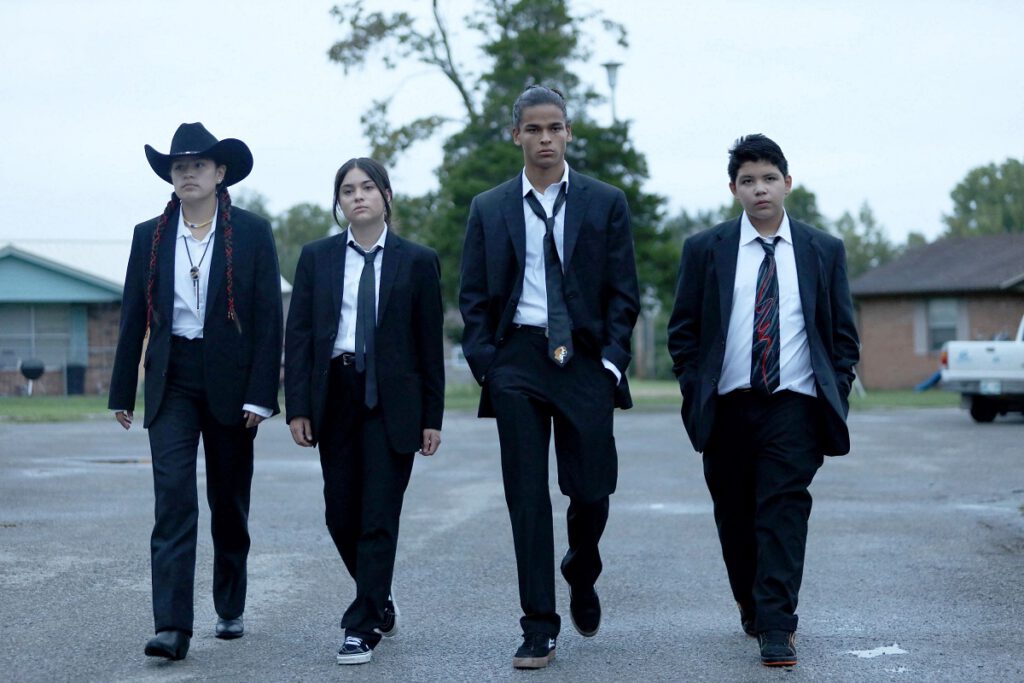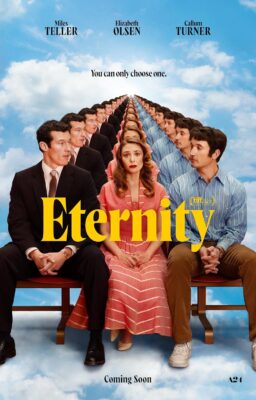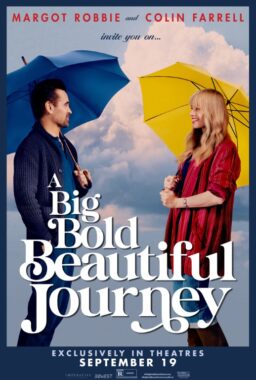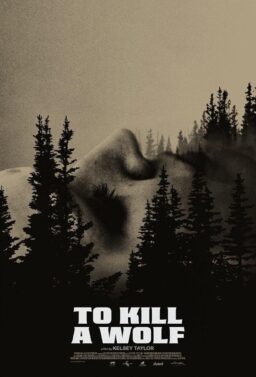“Reservation Dogs,” the new slice-of-life dramedy from friends Sterlin Harjo and Taika Waititi, is not just another FX series. The show is set in Indian Territory, the name for the northeastern part of Oklahoma, and focuses on four Indigenous teenagers who get into shenanigans in hopes of making a little cash. Each successful scheme adds to their ‘Escape to California’ fund, a goal that was birthed after the tragic death of their friend Daniel a year prior.
The show is character-driven as each of the main cast members adds to the group’s dynamics. Each of the four teens differ by age, family situation, and personality, but the first few episodes display their ability as a unit. Willie Jack (Paulina Alexis) is the quick witted brains and brawn; Elora (Devery Jacobs) acts as the group’s moral center; Bear (D’Pharaoh Woon-a-Tai) takes his role as the unofficial leader; and Cheese (Lane Factor) is innocence personified.
This group’s chemistry is evident, and not just during the somewhat illegal situations they might find themselves in, but also during movie nights, catfish lunches, and visits to the infamous IHS clinic. The performances stand on their own, and a cameo in the third episode from the legendary Gary Farmer is a cherry on top. A few other big names appear throughout this first season, including the incredible Wes Studi, who is originally from a small town outside the Cherokee Nation similar to the setting of the show.

“Reservation Dogs” was shot on location in Okmulgee, which is the capital of the Muscogee Nation. Harjo is Seminole and Muscogee, currently living within the Muscogee Nation in a little area known as Tulsa. This area of the country can only be authentically recreated for the screen by creatives who understand the history and how it plays into modern Indigenous experience. Many Native people who still live in this stretch of Oklahoma are descendants of those who were forcibly and legally relocated from their traditional homelands after President Andrew Jackson signed the Indian Removal Act in 1830. The legacy of that pain and necessary resilience has created a bond between this land and the Indigenous cultures that have continued to exist despite the many attempts by the government to eliminate anything Indian. The General Allotment Act of 1887, as well as the state of Oklahoma entering the Union in 1907, are just some of the other historical hindrances that Native communities in Indian Country have adapted to.
This bond and the need for connection to community might be the reason so many Native people stay with the wide open fields, the best sunsets that have ever graced the sky, the Sonic Drive-Ins every couple miles or so, and tornado season. But there are much uglier aspects to this way of life that would inspire teenage friends to do anything in their ability to escape to the great unknown that is California. These contradictory yet coexisting truths that make up the Native experience in Oklahoma are felt from the first few minutes of the pilot, and are a direct result of the show’s groundbreaking involvement of Native talent in all aspects of the production.
Trauma is only one aspect of Native experience and I’ve never met a Native in the state of Oklahoma (or anywhere else) that doesn’t love to laugh. Most of the humor in “Reservation Dogs” is like an inside joke between the most intimate of pals, which makes sense considering the all-Indigenous writer’s room who has first hand knowledge of the specific breed of Indian humor. Did I ever think we would see an episode of television with a cold open that features an older white couple theorizing about what ‘land back’ really means? No, but I have not stopped thinking about this satirical moment since watching. There are times the humor needs a moment to breathe but with the dense subject matter and only about 26 minutes each episode, that’s a risk the showrunner (also Harjo) is willing to take. Overall, these dangerous creative choices pay off. The clever banter and creativity allows for a unique perspective to be seen on television for the first time.

“Reservation Dogs” is Indigenous-made with an Indigenous viewership in mind. While the Native experience in Oklahoma is specific and perfectly captured, the delicate reminder that Indigenous people are human is seen in the coming-of-age familiarities. The kids pin Tarantino posters in their bedrooms, wear faded Wu-Tang shirts, eat too many spicy chips, and are trying to figure out how to do this thing we call life. The history of Native representation in the entertainment industry is dark, and the purposeful erasure of our truths has saturated the many decades that have passed. But while a new show won’t fix the systematic issues that still exist behind so many productions, “Reservation Dogs” is here to remind you that Native people aren’t extinct. We are not monolithic stereotypes from the western movies that only exist in the past.
The release of “Rutherford Falls” on Peacock earlier this year was the first Native-involved sitcom that inspired similar understated commentary as it showed Indigenous characters in everyday scenarios. Many of the creatives involved with that show can also be found among the credits of “Reservation Dogs.” For example Sydney Freeland directed several episodes on both series; Tazbah Chavez wrote on both shows and directed her first television episode for “Reservation Dogs”; and Jana Schmieding wrote and starred in “Rutherford Falls” and has a brilliant cameo in the second episode of “Reservation Dogs.” This overlap is just evidence of the blossoming Indigenous filmmaking community that is helping make up for lost time in an industry that has so purposely excluded us in front of and behind the camera.
There has already been some vocal confusion about the use of the word ‘reservation’ in the title. Does Northeastern Oklahoma even have reservations? To save those who might not know a Google search, there was a major Supreme Court decision last year in McGirt v. Oklahoma that is still a source of debate. The specifics of the crime in question are gruesome and not necessary to the SCOTUS decision, but basically, the question of tribal criminal jurisdiction was brought by the Muscogee Nation to the federal court. The tribe argued that despite Indian Territory becoming part of the 46th state of Oklahoma in 1907, their reservation was never disestablished during the allotment era that broke up the communal land into individual property.

Essentially, this would mean that any Native person that was tried in state court was done so without the state holding jurisdiction. Obviously, the State of Oklahoma didn’t like the possibility of losing power over the Muscogee Nation but alas, the SCOTUS agreed that the reservation was never disestablished. While this decision only applied to the Muscogees, other tribes who had been told their reservations were no longer a thing in 1907—the Cherokee, Choctaw, Chickasaw, and Seminole—followed with similar court cases and won as well. The harmful ramifications of legislation from the 1800s is still very much relevant to today, especially for Native communities like the one seen in this new show.
Land is more than a background character in “Reservation Dogs.” It holds onto the memories, the good and the bad. Bear lies on the land after being ambushed with paintballs from a rival gang. The broken dirt is seen like little mole hills as Willie Jack’s uncle (Gary Farmer) searches for weed he buried decades prior. And in a more solemn moment, the sun shines on the four friends as they conduct a ceremony and swear to leave this land on the anniversary of Daniel’s death.
“Reservation Dogs” is the definition of authentic storytelling. The first four episodes capture the intangible feeling and nuanced truth that is specific to the Oklahoma Native experience unlike anything that has aired prior. Here’s to all the Indigenous kids who will watch this show and feel the joy of representation. Skoden!
Four episodes screened for review. “Reservation Dogs” is now playing on FX on Hulu.











